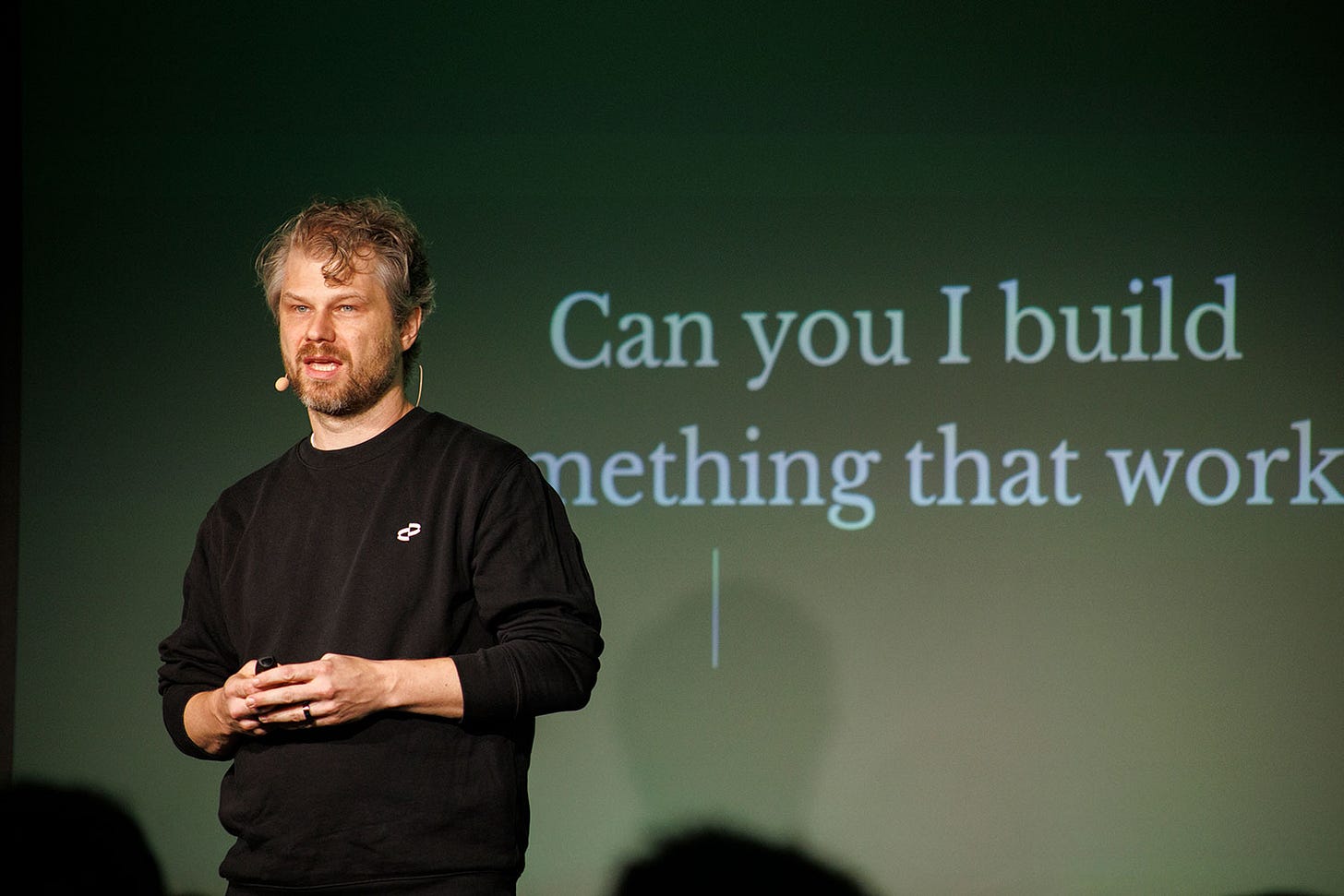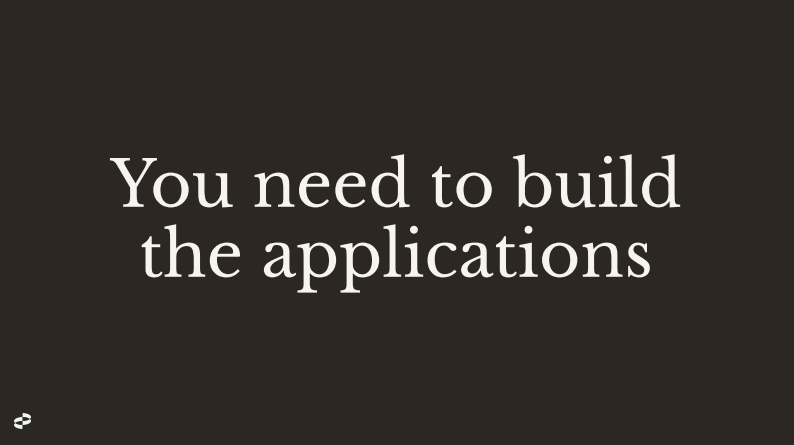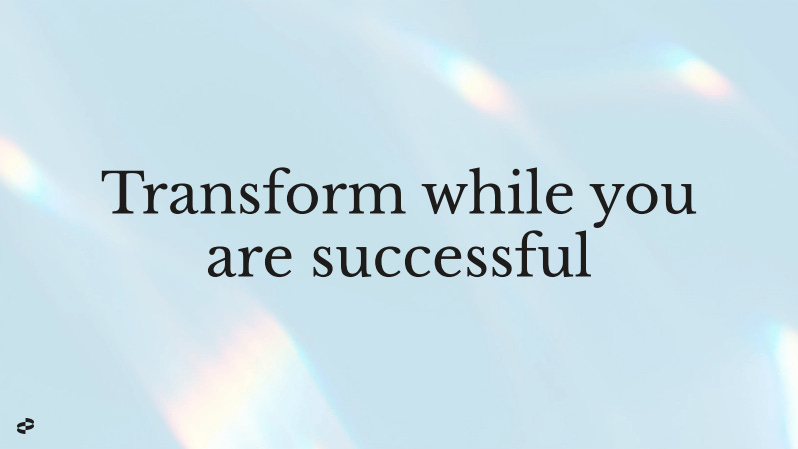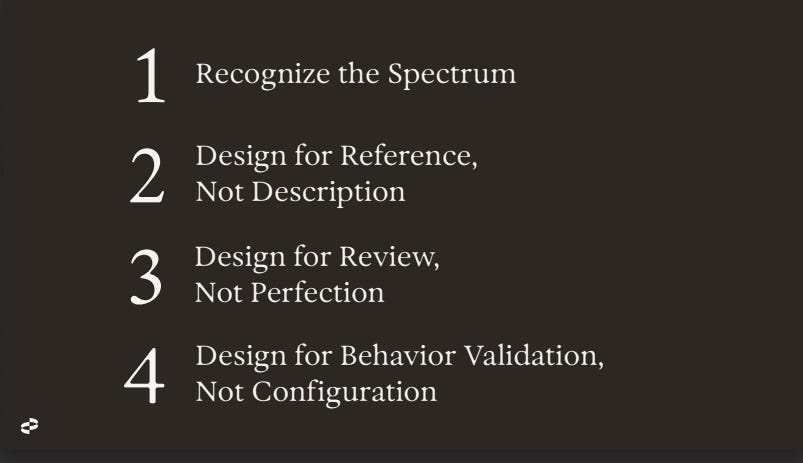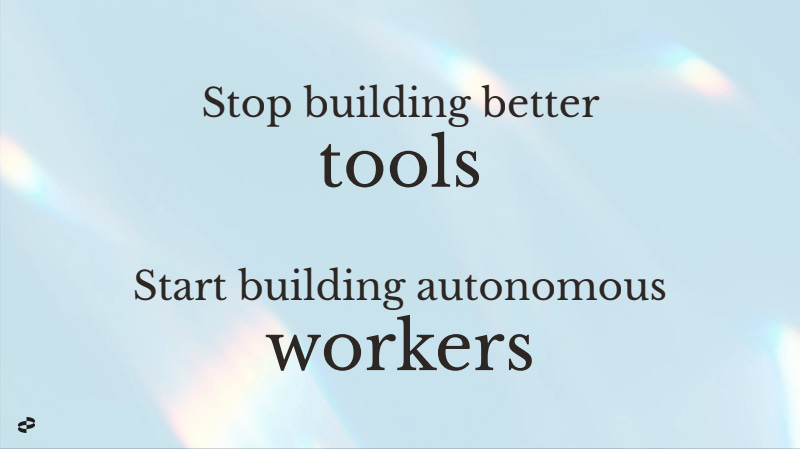Stop Building Better Hammers. Start Building Carpenters.
What Stefan Ostwald taught 250 product managers about the AI revolution happening right now.
I’m sitting in my Gesundbrunnen apartment right now, still processing what happened at ProductLab Conference in September.
Gesundbrunnen—yeah, not exactly the Berlin you see on Instagram. But here’s the thing: while everyone’s fighting for overpriced flats in Kreuzberg, this neighborhood near [Nord]bahnhof is quietly transforming. New bars opening up. Prenzlauer Berg parents discovering they can actually afford space here. Tech people realizing the S-Bahn and FEX connection is unbeatable.
Like AI, sometimes the smartest move is the path no one’s talking about yet.
Which brings me to ProductLab. CIC Berlin (the space previously known as The Factory) was buzzing with energy—250 product managers, leaders from across Europe, all trying to figure out what the hell we’re supposed to do with AI.
Then Stefan Ostwald walked on stage.
And honestly? Everything shifted.
The moment that changed everything
Stefan started with something deeply personal. Since he was a teenager, he had one obsession: Can I build something that works FOR me, not WITH me?
Failed robot bachelor thesis. Failed carpooling startup. Failure after failure.
But here’s what got me: he never stopped trying. Because there’s something magical—his word—about systems that work for you. Systems that help you even when you walk away.
And with Paloa, he finally cracked it. Not through robotics. Not through clever algorithms.
Through large language models that can reason and act.
The question that breaks everything open
Stefan asked us something that’s been haunting me ever since:
“What if, instead of building a better hammer, we built the carpenter?”
Let that sit for a second.
We’re all sitting here in our product teams, building better search tools. Better analytics dashboards. Better checkout flows. Even our “AI features” are just... better tools.
But what if we’re thinking about this completely wrong?
Tools vs. Workers: The test that matters
Here’s the framework Stefan gave us, and it’s so simple it hurts:
Can you walk away and it keeps working?
If NO → You built a tool
If YES → You built a worker
That’s it. That’s the difference between the past and the future.
He painted this picture of Jesse, a consultant with a travel agent worker. Her flight gets delayed. But before she even panics, her agent has already:
Rebooked her on the next flight > 2. Informed her hotel > 3. Extended her car rental > 4. Got her a voucher for a free meal > 5. Filed €400 compensation paperwork
Jesse barely had anxiety. The worker handled everything.
Six months ago? That day would’ve been hell. Now? Few Seconds.
These experiences are currently only available to CEOs with amazing assistants. In the future, they’ll be available to everybody.
This is happening across EVERY industry
Stefan didn’t just talk theory. He showed the transformation happening everywhere:
CRM: Not dashboards—workers qualifying leads and following up
Analytics: Not dashboards—analysts digging into data and alerting you
Competitive analysis: Someone watching the market for you 24/7
Customer service: Paloa’s client Minia increased satisfaction by 38%
The models are ready. They’re good enough right now.
What’s missing is the applications on top. That’s what WE need to build.
The hard truth about transformation
Here’s where Stefan got real with us. Like, uncomfortably real.
At Parloa, they had a successful rule-based automation product. Tripling revenue every year. Everything was working.
And they made the shift anyway.
He didn’t sugarcoat it: “This was really really intense. The commercial team was shielding pressure from competitors who were advancing faster on the old pattern. Technology was hustling hard to get the new product running.”
But here’s his point: What choice do you have?
Two paths:
Path 1: Keep going with what works
→ Short-term success + low risk
→ Long-term: Someone else will rethink the pattern and disrupt you
Path 2: Transform now while you’re successful
→ Hard now + significant risk now
→ Realistic chance of long-term success
The question isn’t “will industries be disrupted?”
The question is: Will YOU be the one disrupting it?
What to do Monday morning
Stefan gave us homework. Real, practical homework:
Ask yourself: What will be your WhatsApp moment?
(Context: WhatsApp completely rethought communication when SMS was dominant)
Then, when you go back to your team:
What problems do your customers always have?
What do they always need to look at?
What do they always need to drill down into?
Then ask a different question: Not “how can we improve our tool?” but “Can we build something that works FOR them?”
Once you ideate, test it: Can you walk away and it keeps working?
If yes, you’re onto something.
Four principles for building AI workers
Stefan gave us his battle-tested framework from building at Paloa. This isn’t theory—this is what actually works:
1. Recognize the spectrum
It’s not binary (tools vs. workers). There’s everything in between—like co-pilots in coding where AI does work but humans review before deployment. Consciously decide where on the spectrum you should be for each problem.
2. Design for references, not descriptions
Imagine trying to describe “the blue pants in the upper left” to an agent. Exhausting, right? Instead, make things explicitly referenceable. Like Notion’s @ symbol. Make implicit references explicit = faster velocity + better quality.
3. Design for review, not perfection
AI makes errors. It will continue to make errors. The job isn’t to make it perfect—it’s to make working with an imperfect AI easy. Look at Cursor in coding: smooth iteration cycles, easy accept/decline, simple rollback when AI goes off rails. Design for the error state, not the perfect state.
4. Design for behavior validation, not configuration
Traditional systems were deterministic—add a rule, it follows the rule. AI agents? They’re like humans but worse. Just because you tell them something doesn’t mean they’ll do it. The truth is what actually arrives at the user, not what you put into the model.
Stefan’s team simulates hundreds of scenarios, then uses another AI agent to evaluate them automatically. Build the validation loop, and you can even do automatic prompt optimization.
Why this hit different
Look, I’ve been to a lot of conferences. Heard a lot of talks about AI.
But Stefan’s talk hit different because it wasn’t about “AI strategy” or “digital transformation” or any of that consultant-speak bullshit.
It was about a guy who’s been obsessed with building autonomous systems since he was a teenager. Who failed multiple times. Who finally figured it out. And who’s willing to tell us—not from theory, but from the trenches—exactly what it takes.
He stood up there and said: The age of AI is here right now. If you don’t do this, somebody else is out there doing it.
And you know what? He’s right.
My take from Berlin
I’m writing this from Gesundbrunnen—not the coolest neighborhood, I’ll admit. But it’s near Hauptbahnhof, rent is actually affordable, and something interesting is happening here. Cozy bars are popping up. Mummies are migrating from Prenzlauer Berg. Tech people are discovering what locals already knew.
It reminds me of Stefan’s talk, actually. Everyone’s chasing the obvious paths—Kreuzberg, Mitte, Prenzlauer Berg. But sometimes the smartest move is to take the uncovered path. To see what others are missing. To bet on transformation before it’s obvious.
Berlin has always been about reinvention—tearing down walls, building new things from the rubble, embracing change even when it’s uncomfortable.
Stefan’s message feels very Berlin to me: Don’t wait for the perfect moment. Transform while you’re successful. Disrupt yourself before someone else does.
CIC Berlin, where we hosted ProductLab (previously known as The Factory)? Stefan mentioned they started there years ago. Full circle. From startup struggling to make autonomous systems work, to standing on that stage showing 250 product managers exactly how to do it.
That’s the journey we’re all on right now.
The models are ready. The technology is there.
The question is: Are we bold enough to stop building better tools and start building workers?
What’s your WhatsApp moment?
I want to hear from you. Seriously.
What’s the thing in your product where users are constantly drilling down, constantly looking at dashboards, constantly doing repetitive work?
What would it look like if that worked FOR them instead of WITH them?
Reply to this email. Let’s figure this out together.
Because Stefan’s right about one thing: Someone’s going to rethink your industry.
Might as well be us.
—Daniele
P.S. ProductLab 2026 dates coming in December. If this year taught me anything, it’s that we need to keep having these conversations. The revolution is here. Let’s architect it together. DM me on LinkedIn!
About the Speaker
Stefan Ostwald, Chief AI and co-founder of Parloa, is a leader in conversational AI with nearly a decade of experience making customer communications easier and more secure through AI. Connect with him on LinkedIn.


